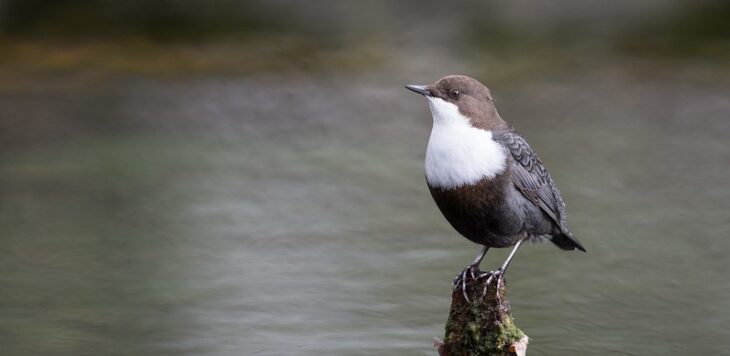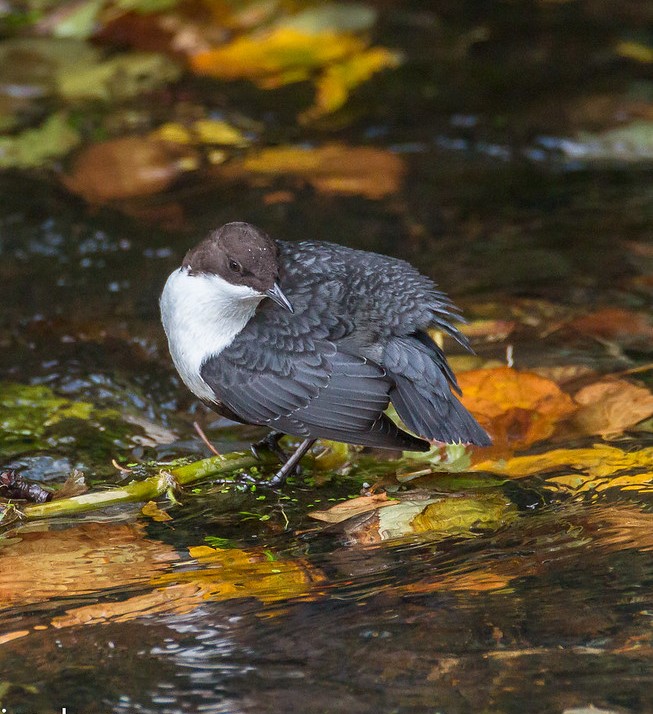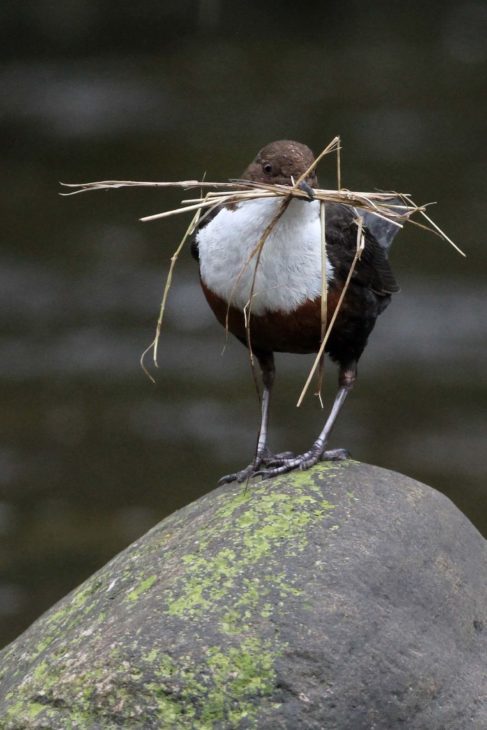Dippers for days at the Falls of Clyde
There’s a lot to love about dippers, and the Falls of Clyde is a great place to watch these river specialists in action, as visitors have discovered this summer.
* * *
If you have been down to take a Sunday afternoon stroll around the Falls of Clyde this summer, you may have encountered some of the reserve staff and volunteers using a scope and binoculars to look out over the river. Maybe you were even one of the people we beckoned over to come and have a look for yourselves!
Each weekend through July and August we have been running our Dipper Watch drop-in events, which introduce hundreds of visitors to some of the wildlife that lives along this stretch of the Clyde. Most people who visit do so to see the spectacular gorge and waterfalls – and these are certainly worth a visit. But there is plenty to see along the way too if you take a closer look.

Herons, grey wagtails, kingfishers and even otters make their home here, but the shallow, fast-flowing flumes, flowing over the sandstone riverbed are particularly good habitat for dippers (Cinclus cinclus). That, or dippers are the perfect birds for the habitat! These plump little creatures are highly adapted to make the most of the conditions: unlike many birds, their bones are solid. Their feathers are oily. Their wings are short and fin-like and they can close their ‘nostrils’. Put together, these features make dippers experts at hunting under the water, which they do in a curious manner – by walking in and submerging themselves, gripping the rocks with strong feet. Once under the water it will use its other attributes to swim in search of prey – particularly insect larvae and Gammarus freshwater shrimps.

Dipper pairs will typically hold a territory spanning about half a kilometre along suitable rivers. In good areas, several pairs might set up territories on consecutive stretches, where they will build mossy, dome-like nests close to the water’s edge (they particularly like human-made structures like bridges and culverts). Depending on the time of day you look, you might see them foraging for material to maintain these nests (typically in the morning) or feeding and grooming (in the afternoon).

Although our Dipper Watch events finish at the end of August, the good news is you can still come and see them for yourselves – you don’t even need binoculars! As you’re walking by the river, stop off for a few minutes to sit and watch the water rush past you. Cast your eye over the rocks: if you can see a little round bird with a snow-white breast, bobbing up and down or picking through the shallows, chances are you’ve found what you’re looking for. Enjoy the show.
Patrick Endall, Falls of Clyde Seasonal Ranger
Help protect Scotland’s wildlife
Our work to save Scotland’s wildlife is made possible thanks to the generosity of our members and supporters.
Join today from just £3 a month to help protect the species you love.
Preface
There’s a lot to love about dippers, and the Falls of Clyde is a great place to watch these river specialists in action, as visitors have discovered this summer. * …
